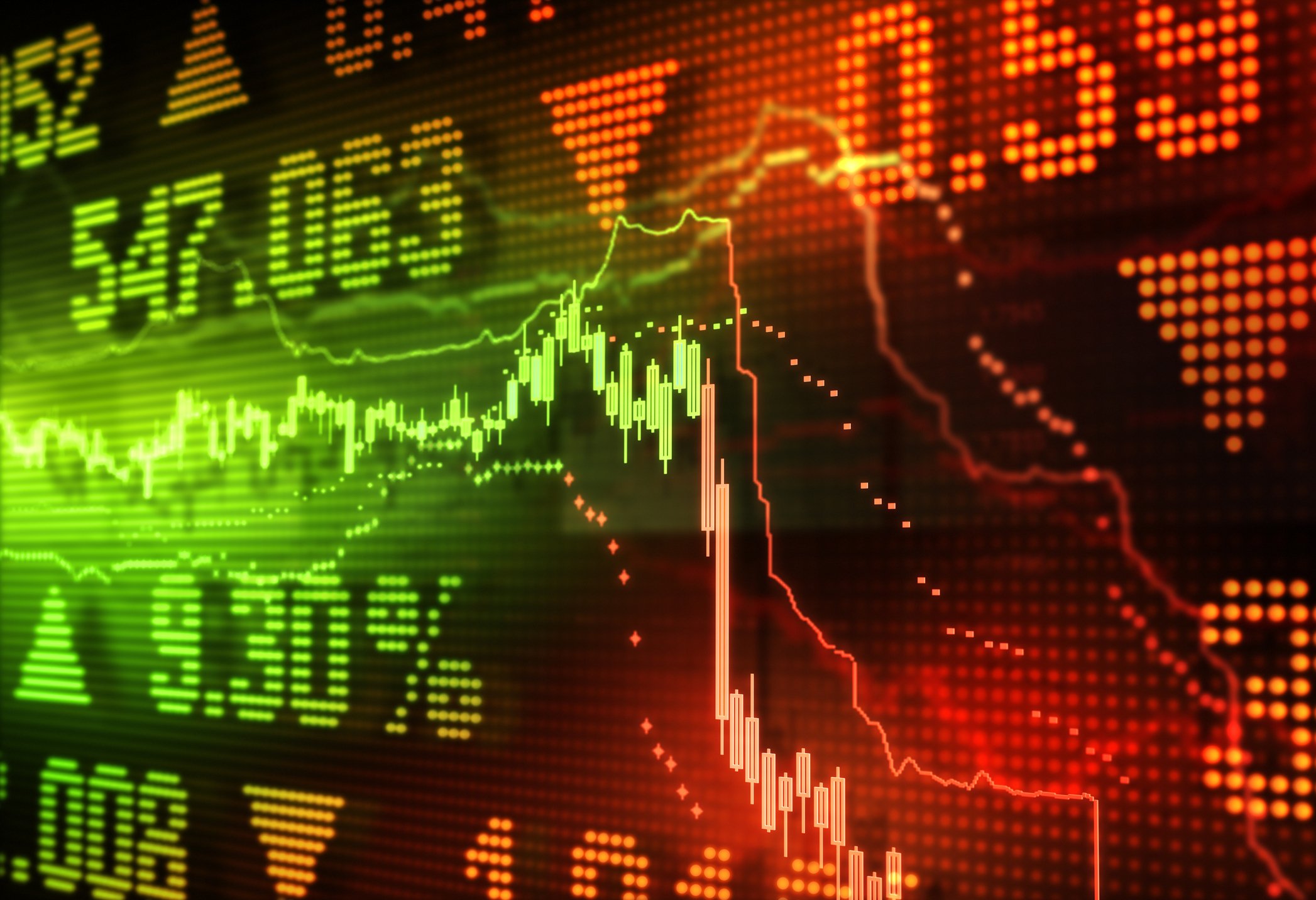The past 10 years and change have really been something special for investors. Both the iconic Dow Jones Industrial Average and broad-based S&P 500 have more than quadrupled in value since their Great Recession closing lows in March 2009, while the tech-heavy Nasdaq Composite has gained in excess of 500%. Not too shabby, considering that the historic average annual return of the stock market is about 7%, inclusive of dividends and when adjusted for inflation.
We're also in the midst of the longest economic expansion on record in the modern era (which dates back about 160 years). This past July we hit our 10th year of economic expansion, surpassing the 120 months that ended when the dot-com bubble burst.
But that doesn't mean there aren't warning signs on the horizon.

Image source: Getty Images.
Recession red flags have been cropping up
For example, all eyes were on the inverted yield curve in recent months. The yield curve is a chart expressing the yields of U.S. Treasury bonds with differing maturities. Typically, we like to see this chart slope upward and to the right. In other words, we'd expect bonds that mature over the long run (10 and 30 years from now) to have higher yields than shorter-maturing notes (say three months and two years). Somewhat recently, we saw this yield curve invert, meaning that short-term Treasury bonds had higher yields than longer-term notes. Every recession since the end of World War II has been preceded by a yield-curve inversion, though it's worth pointing out that not every yield-curve inversion has been followed by a recession.
We've also witnessed a historic rise in corporate debt levels. Interestingly, it's not traditional loans from banks and credit unions that are driving debt levels higher. Instead, it's corporations issuing their own secured and unsecured debt, or convertible debentures. During the height of the Great Recession, nonfinancial corporate debt hit $6.6 trillion, or 44% of U.S. gross domestic product (GDP). As of July 2019, nonfinancial corporate debt had soared to almost $10 trillion, representing 48% of U.S. GDP.
The ISM Purchasing Managers Index (PMI) has also been a cause for concern. The past three months have featured a contraction in the manufacturing sector, according to the ISM PMI data. In fact, the September reading was the lowest seen in more than a decade.
And yet, none of these factors is the most damaging data point of all.

Image source: Getty Images.
The stock market warning Wall Street continues to overlook
The most blatant warning that the stock market may be on the verge of a problem can be found by taking a closer look at this year's outperformers.
You're bound to find your fair share of high-growth technology companies that have outperformed the 23% year-to-date return of the S&P 500. But some outperformers might surprise you (based on year-to-date returns, inclusive of dividends, through this past weekend):
- Costco Wholesale (COST +0.56%): Up 50%
- AT&T (T +0.72%): Up 47%
- Southern Company (SO +0.78%): Up 44%
- Procter & Gamble (PG +0.34%): Up 34%
- NextEra Energy (NEE 0.31%): Up 30%
Spot the trend?
These are low beta, moderately-to-highly defensive basic-needs goods and service companies. In other words, these are very-low-volatility, highly profitable, and time-tested businesses that could best be described as "boring" -- and they're often the perfect investment for investors who want to run and hide when things go pear-shaped.
Think about what each of these companies brings to the table:
- Costco is a relatively low-margin retailer and grocer with a business model protected from a steep retail cliff by its subscription-based model.
- AT&T, the wireless and content giant, offers predictable cash flow thanks to its high-margin wireless subscriptions that are fed by data usage.
- Southern Company provides electricity and natural-gas utility services to around 9 million people. Consumption of electricity and gas rarely changes based on the health of the U.S. economy.
- Procter & Gamble provides basic-needs goods, such as Tide detergent and Crest toothpaste. Consumers need many of the products P&G produces, regardless of how well or poorly the economy is performing.
- NextEra Energy, like Southern, provides electricity and natural gas to around 10 million people, meaning it leans on the predictability of cash flow provided by its services. NextEra also happens to generate more electricity from wind and solar than any other utility.

Image source: Getty Images.
And to wrap things up in a perfect bow: Costco, AT&T, Southern Company, Procter & Gamble, and NextEra all have betas below 1 -- meaning they're less volatile than the S&P 500 -- and they all pay a dividend.
If Wall Street and investors are starting to pile into these tried-and-true slow-growers rather than higher-growth names (in, say, the technology of healthcare sectors), it may very well signal a shift in perceived risk. And there's definitely reason to be cautious about stock valuations.
For instance, the Shiller price-to-earnings ratio for the S&P 500 -- that is, the price-to-earnings ratio based on average inflation-adjusted earnings from the previous 10 years -- is once again nearing a 17-year high. Valuations aren't exactly cheap, and the fire has been stoked as much as it can with historically low interest rates and record stock buybacks in recent years.
Look, I've been wrong a lot of times before when it comes to calling for a market top. And, ultimately, calling a top is silly, because the stock market eventually winds up putting each and every correction in the rearview mirror, which favors long-term investing. But the most telling indicator that the stock market is in trouble isn't a yield-curve inversion or rising corporate debt levels. It's Wall Street and investors piling into highly defensive names. While this doesn't mean "run and hide," it wouldn't be a bad idea to have some cash handy for when the market does inevitably hit the skids.








